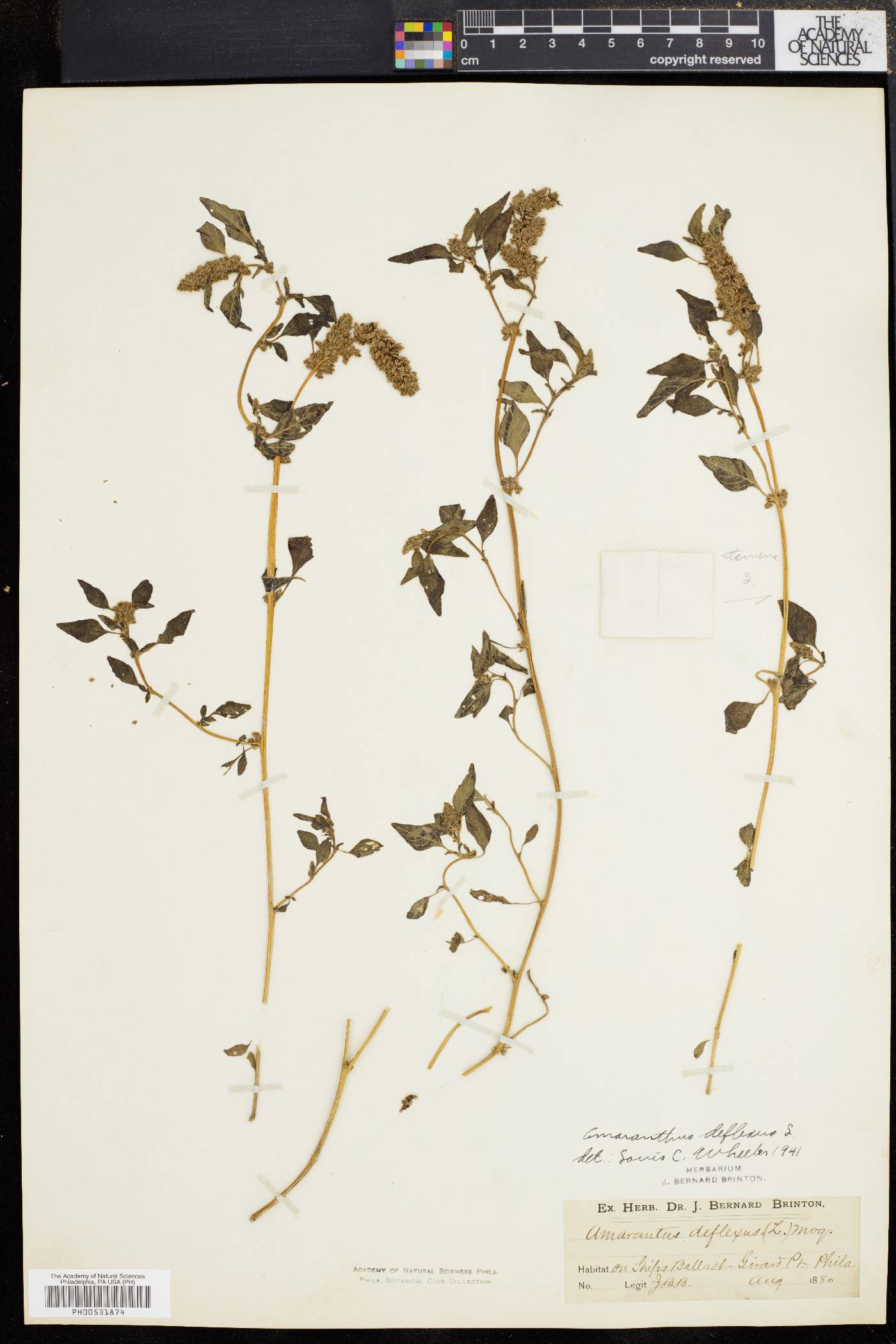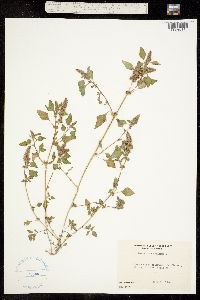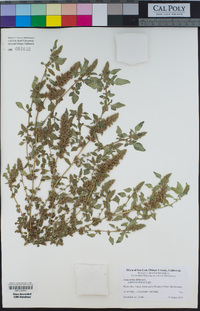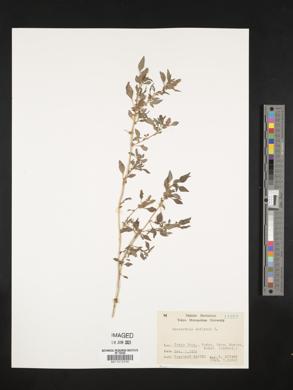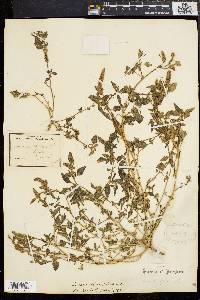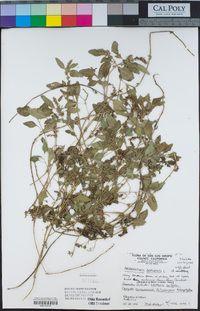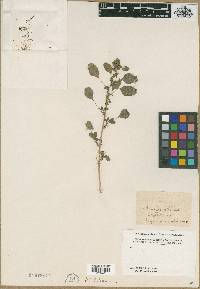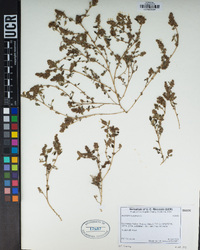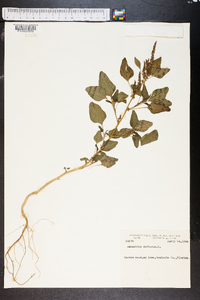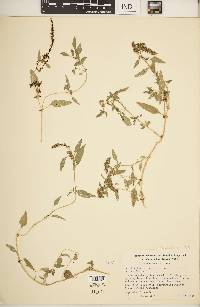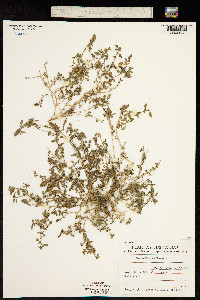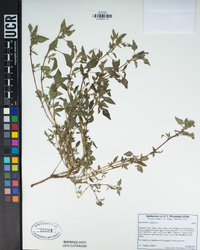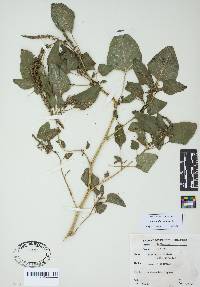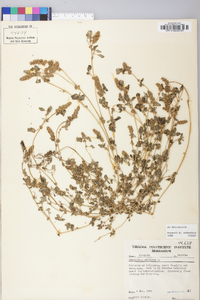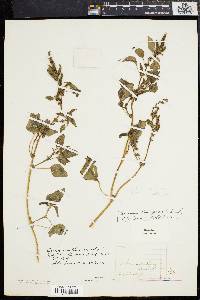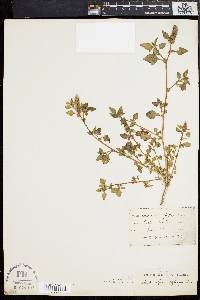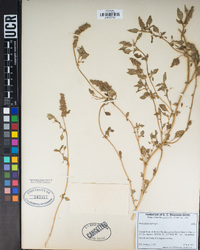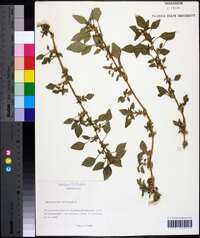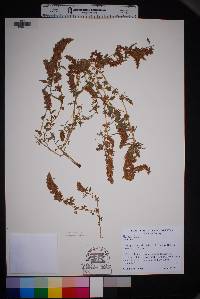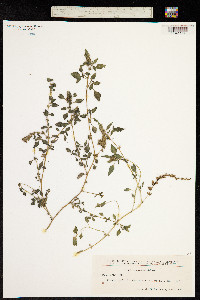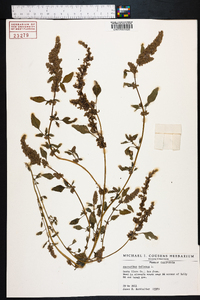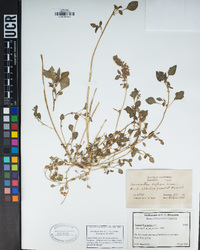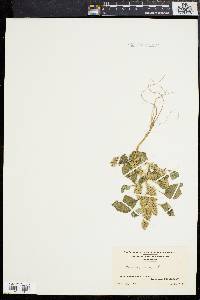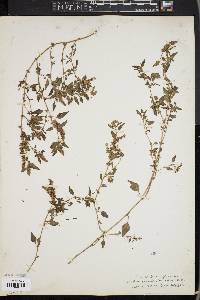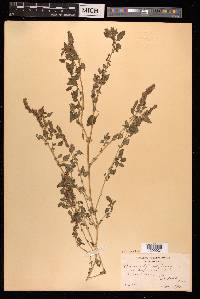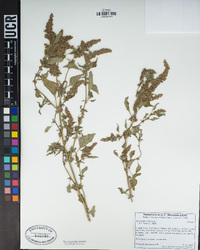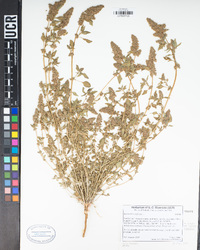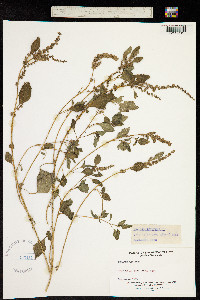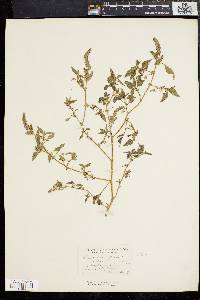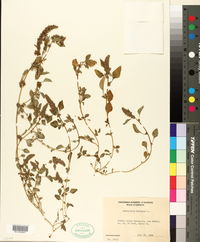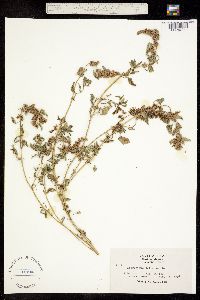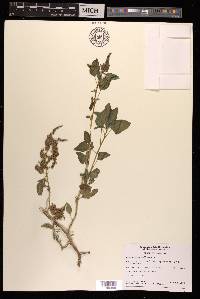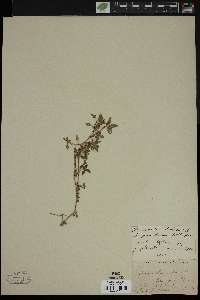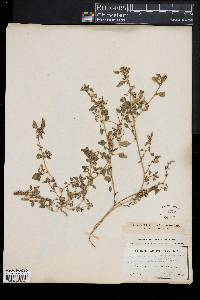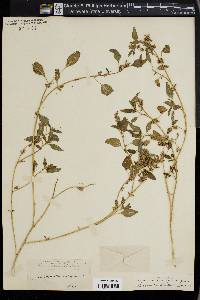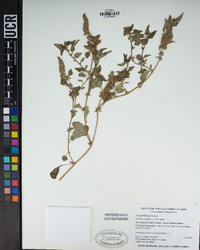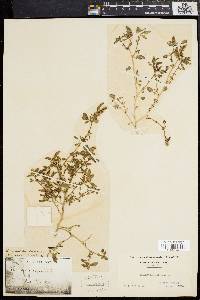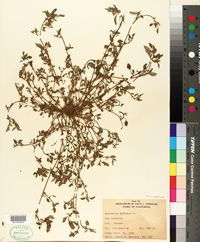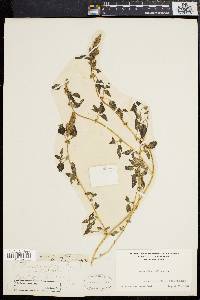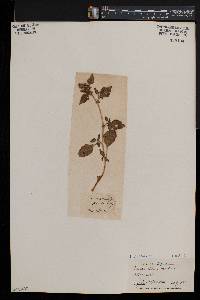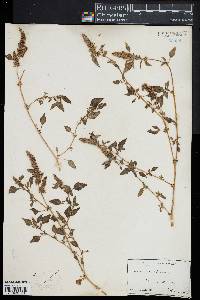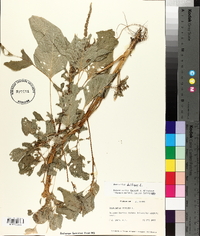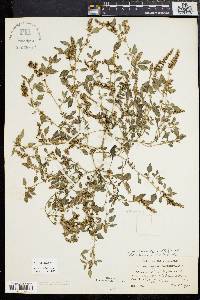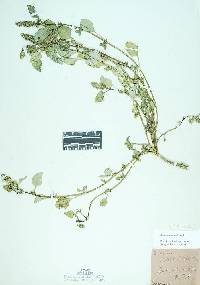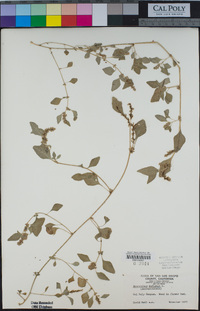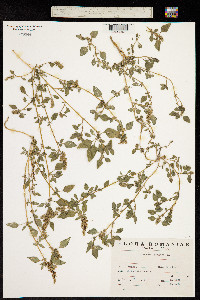
|
|
|
|
Family: Amaranthaceae
Large-Fruit Amaranth
|
Plants short-lived perennial or annual, pubescent in distal parts of plant or becoming glabrescent at maturity. Stems ascending or prostrate, profusely branched basally, radiating from rootstock, mostly 0.2-0.5 m. Leaves: petiole 1/2 as long as to equaling blade; blade rhombic-ovate or ovate to lanceolate, 1-2 × 0.5-1 cm, base tapering or cuneate, margins entire, plane or slightly undulate, apex subacute, obtuse, or retuse or shallowly emarginate, mucronulate. Inflorescences terminal, erect, compact, pyramidal panicles and also some axillary clusters, green or silvery green, occasionally tinged with red, leafless at least distally. Bracts of pistillate flowers linear, 0.5-1 mm, 1/2 as long as tepals. Pistillate flowers: tepals 2-3, narrowly elliptic or oblanceolate, not clawed, equal or subequal, 1.2-2 mm, apex broadly acute; style branches erect; stigmas 3. Staminate flowers clustered at tips of inflorescences; tepals 2-3; stamens 2-3. Utricles marked with 2(-3) green lines that intersect at apex and divide fruit into halves or quarters, slightly to distinctly inflated, ellipsoid, 2-3 mm, distinctly longer than tepals, smooth (in dry plants wrinkled or rugose), indehiscent. Seeds very dark brown to black, 1-1.2 mm diam., shiny, filling only proximal portion of fruit. Flowering summer-fall. Weedy areas, ballast heaps, railroads, other disturbed habitats; 0-500 m; introduced; Ala., Calif., Fla., Ga., La., Mass., N.J., N.Y., Oreg., Pa., Tenn., Va.; native to South America; locally introduced or naturalized in tropical to warm-temperate regions of the globe. The hybrid between Amaranthus deflexus and A. muricatus was described from Europe as A. ×tarraconensis Sennen & Pau (see J. L. Carretero 1979) and may be expected in North America in the future in places of possible co-occurrence of the parental species.
Monoecious; prostrate or ascending, 2-5 dm; lvs lanceolate to broadly ovate, 1-3 cm; petiole about equaling the blade; terminal panicle dense, narrowly ovoid, 2-5 cm; smaller clusters also present in the upper axils; bracts shorter than the fr; sep of the pistillate fls 2, oblanceolate, two-thirds as long as the fr, acute; fr smooth, flat-ellipsoid, 2.5 mm, half as wide, indehiscent; seed obovate, shining, 1.2 mm; 2n=34. Probably native to tropical Amer., occasionally found in waste places in our range, especially along the coast. Gleason, Henry A. & Cronquist, Arthur J. 1991. Manual of vascular plants of northeastern United States and adjacent Canada. lxxv + 910 pp. ©The New York Botanical Garden. All rights reserved. Used by permission. |
This project was made possible in part by the Institute of Museum and Library Services [MG-70-19-0057-19].
Powered by Symbiota

